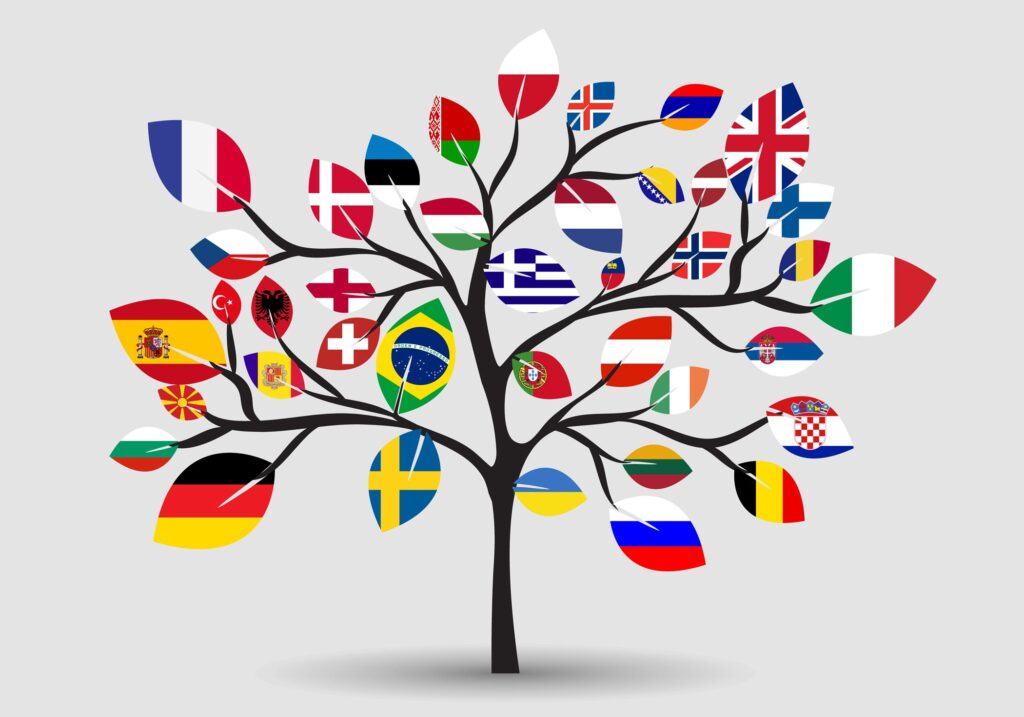Developing a multilingual website is an important step towards reaching a global audience and expanding your business. However, it’s not always an easy process, and there are some common mistakes that can trip up even the most seasoned developers.
Here are some tips on how to avoid these mistakes and create a successful multilingual website.
1. Failing to Plan Ahead
One of the biggest mistakes when making your website multilingual is failing to plan ahead. Before you begin, it’s important to identify the languages you want to support, determine the right approach for each language, and establish a clear content strategy.
This will help ensure that your website is structured and designed in a way that accommodates different languages and cultures.
2. Relying Solely on Machine Translation
Machine translation has come a long way, but it’s not yet a perfect solution. Relying solely on machine translation can lead to inaccurate translations and miscommunication, potentially alienating your audience. It’s important to work with experienced human translators who can ensure that your website’s content is accurately translated and culturally appropriate.
3. Neglecting SEO and Keyword Research
SEO and keyword research are crucial components of website development, and they become even more important when developing a multilingual website. Neglecting these components can lead to poor search rankings in non-English-speaking regions, hindering your website’s discoverability and reducing your reach. It’s important to conduct thorough keyword research and optimize your website’s content for each language you’re targeting.

Source: ghax.io
4. Ignoring Cultural Differences
Every language and culture has its own unique nuances and subtleties, and it’s important to keep these in mind when developing a multilingual website. Ignoring these cultural differences can lead to misunderstandings and miscommunication, potentially damaging your brand’s reputation.
It’s important to work with native speakers and cultural experts who can ensure that your website’s content is culturally appropriate and resonates with your target audience.
5. Failing to Test and Optimize
Finally, one of the biggest mistakes when developing a multilingual website is failing to test and optimize. It’s important to thoroughly test your website’s functionality and usability in each language you’re targeting, ensuring that it works smoothly and meets the needs of your audience.
Additionally, it’s important to continuously optimize your website’s content and design based on user feedback and performance metrics.
6. Underestimating the Technical Challenges of Multilingual Websites
One of the common mistakes that developers make when creating a multilingual website is underestimating the technical challenges involved. Developing a site that supports multiple languages requires a thorough understanding of the technical complexities involved, and overlooking these challenges can result in poor website performance, functionality, and user experience.
Some of the technical challenges involved include text direction, font support, character encoding, and website localization. Developers must ensure that their website can display and handle different languages and scripts, including languages that read from right to left or have special characters. Additionally, developers must implement localization features such as language-specific URLs, regional content, and currency conversion.
Underestimating the technical challenges of multilingual websites can result in a poorly functioning website that may not work in certain regions or with certain devices. To avoid this, it is important to work with experienced developers and to thoroughly test your website across multiple languages and devices.
How to effectively design a Multilingual Website

Source: inzonedesign.com
Designing a multilingual website requires careful planning and execution to ensure that the website is user-friendly, culturally sensitive, and technically sound. Here are some key factors to consider when designing a multilingual website:
Understand Your Audience
The first step in designing a multilingual website is to understand your target audience. You should identify the languages that your audience speaks and their cultural preferences. This information will help you to design a site that is culturally appropriate and user-friendly.
Choose the Right Platform
When designing a multilingual website, it is essential to choose the right platform. You can use a content management system (CMS) such as WordPress or Drupal, which allows you to manage your content in multiple languages. Alternatively, you can use a translation plugin to translate your content automatically. Whatever platform you choose, make sure it supports multilingual websites.
Plan Your Content Strategy
Before designing your multilingual website, it is essential to plan your content strategy. You should identify the pages that need to be translated and create a content plan for each language. This will help you to ensure that your site is consistent and user-friendly across all languages.
Use Professional Translators
To ensure the quality of your translations, it is recommended that you use professional translators. Avoid using machine translation tools, as they are often inaccurate and can result in awkward translations. Professional translators will ensure that your content is culturally appropriate, accurate, and free from grammatical errors.

Source: acutrans.com
Use Clear Navigation
To ensure that your site is user-friendly, it is important to use clear navigation. Use language flags or dropdown menus to allow users to switch between languages easily. It is also important to ensure that your site structure is consistent across all languages.
Test
Before launching your site, it is important to test it thoroughly. Test all pages, links, and forms to ensure that they are working correctly in all languages. You should also test your website on different devices and browsers to ensure that it is compatible with all devices.
In conclusion, developing a multilingual website can be a challenging process, but it’s also a rewarding one. By avoiding these common mistakes and following best practices, you can create a successful multilingual website that reaches a global audience and drives business growth.

























